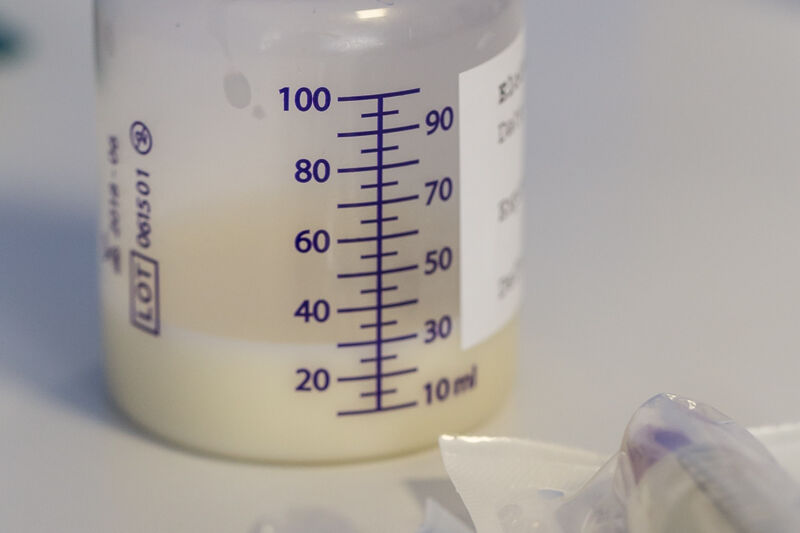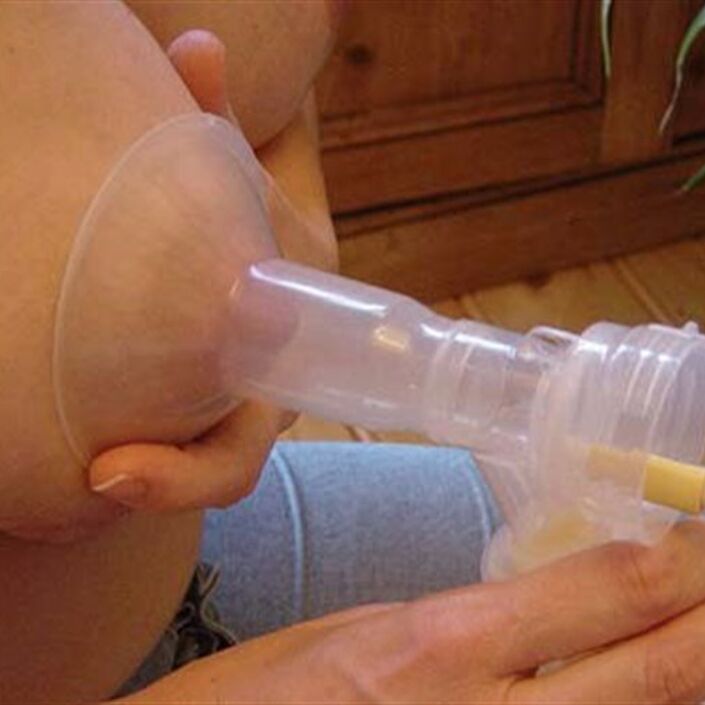Breast pumps
Breast pumps are a useful way of helping you to express milk for your baby. We have more information about expressing on this page.
There are various breast pump options available. You may wish to combine different methods to suit your needs. It is important that you use what works best for you.
- Electric pumps – There are several types of electric pump, and most can be adapted to allow single or double pumping (pumping both breasts at the same time). Hospital-grade, double electric breast pumps can be ideal if you need to establish and/or maintain your milk supply with a pump, or you have to express for a long time.
- Hand pumps – Hand pumps are usually less expensive and are more widely available in shops. With hand pumps, suction is created by squeezing a handle. This can be quite tiring after a while, so using an electric pump can save time and energy. A hand pump is ideal for short-term or occasional use, or if you are travelling and cannot access an electric pump.
Many neonatal units have breast pumps on the unit so that you can express your milk while you are with your baby. Some units can lend you a breast pump to use at home but if not, you should be able to rent or buy one. Some units will give you a hand pump which can be used at home. Talk to the midwife or nurse on the neonatal unit for more information.
Getting ready to express
Give yourself time to prepare your expressing equipment. You will need:
- 1 or 2 expressing kits (for single or double pumping)
- Pump and tubing, funnels and valves
- Bottles and lids for the bottles
- Water to drink
- A pen to write your details on the bottle label
- A table to put the bottle on while you disconnect from the tubing
- Something to record when, for how long and how much you have expressed (this could be in a notebook or phone app).
The neonatal unit will provide disposable bottles and labels. Make sure you have these items close to you when expressing. We have more information about how to clean, sterilise and look after your equipment and store breast milk at home. To reduce the risk of infection to your baby, always wash your hands thoroughly before collecting milk.
Tips for expressing using a pump
Your healthcare team will help support you with expressing and will help you to find a way of expressing that works best for you. Partners, friends and family can also help by providing support and encouragement. Many parents find that being relaxed and comfortable when expressing helps milk to flow more easily.
Make sure that you are as relaxed and comfortable as possible before expressing, as this can help improve milk flow. Taking some deep breaths and concentrating on your breathing can help with this. Expressing after skin-to-skin or spending time with your baby can help stimulate the hormone that helps milk flow (oxytocin).
Here are more some tips to help with expressing using a pump:
A sturdy chair with arms can make expressing more comfortable. Try to sit comfortably, with your back straight.
Partners can help at this stage by helping you to feel relaxed, and making sure that you have something to eat or drink nearby. Some parents find that having a photo of their baby close by or listening to relaxing music can help with milk flow, so partners can help to get this organised before expressing.
Start with a very gentle breast massage to encourage the let-down reflex.
Support your breast from underneath, with fingers flat on your ribs and the index finger where the breast meets the ribs. This helps to support the breast tissue while it is in the funnel (the part that goes over your nipple).
Make sure that the nipple is central to the funnel. Keep the funnel close enough to the breast to maintain a vacuum. Try not to press it too firmly – this should not be uncomfortable.
If you are using an electric pump, be careful not to set the suction level too high straight away. This will cause friction and may make your nipples sore. Try increasing the vacuum on the pump slowly until it starts to feel a bit uncomfortable and then reduce it slightly. Make a note of the best suction level so you can use the same setting the next time you express.
Do not try to remove the collection funnel when expressing. This is because the vacuum can be strong, making it painful if you pull away while the pump is running.
Try gently massaging your breasts when expressing, as this can encourage milk flow. We have more information about breast massage techniques.
When the flow slows down, express the other breast. It is important to remember that the time taken to express is different for everyone. Keep changing the breasts until the milk stops or drips very slowly. Changing from one breast to another can help to stimulate the let-down reflex. If you are double pumping (see below), you can change to hand expressing when the milk stops flowing.
If you notice any discomfort in your nipples or breasts, talk to a feeding specialist or nurse. The funnel may be the wrong size for you.
You can feed expressed milk to your baby using a bottle. We have more information about bottle feeding.
Double pumping
Double pumping (expressing from both breasts at the same time) can save a lot of time. Research has also shown that double pumping may increase your milk supply, especially if your baby is born very early. You are also more likely to get more milk by double pumping. This is because there is a higher amount of prolactin, which is a hormone that produces milk.
Wearing a halter-neck top or hands-free bra that has been adapted to hold both collection sets securely may make double pumping easier. This is because it will free your hands while you express. Some mums find that adapting a well-fitting bra can also work, or pumping bras are available to buy. You can do this by cutting slits in the end of the cups just large enough to ensure that the narrow point of the funnel can slip through, and ensure that the widest part of the funnel can be placed more snugly against the breast.
How to clean and sterilise your expressing equipment
Cleaning and sterilising your expressing equipment will kill any germs and make sure it is safe. Here are some tips to clean, sterilise and look after your equipment:
If you are in hospital, follow the hospital guidelines for cleaning, sterilising and storing your expressing equipment, and ask the hospital staff looking after your baby for help if you need it.
If you are at home, thoroughly wash the breast pump kit and bottle in warm soapy water and scrub with a bottle brush after expressing. Rinse well with clean warm water. If the breast pump kit is brand new or has not been used for a while, you should take it apart before washing and rinsing it thoroughly.
You should then sterilise the breast pump kit and bottle by heat sterilisation with a steam unit or microwave kit. It is important to always follow the manufacturer’s instructions, and check that your equipment is microwave friendly. Utensils can also be soaked in a cold water sterilising solution. You do not need to decontaminate the tubing that attaches the funnels to the pump.
Check the tubing and funnels regularly to make sure they are clean and not damaged.
If your pump is not working properly it may need replacement valves or other parts. If your unit has loaned you the pump, speak to the unit for more information. If you are at home and you have bought the breast pump yourself, contact the manufacturer for more guidance.


